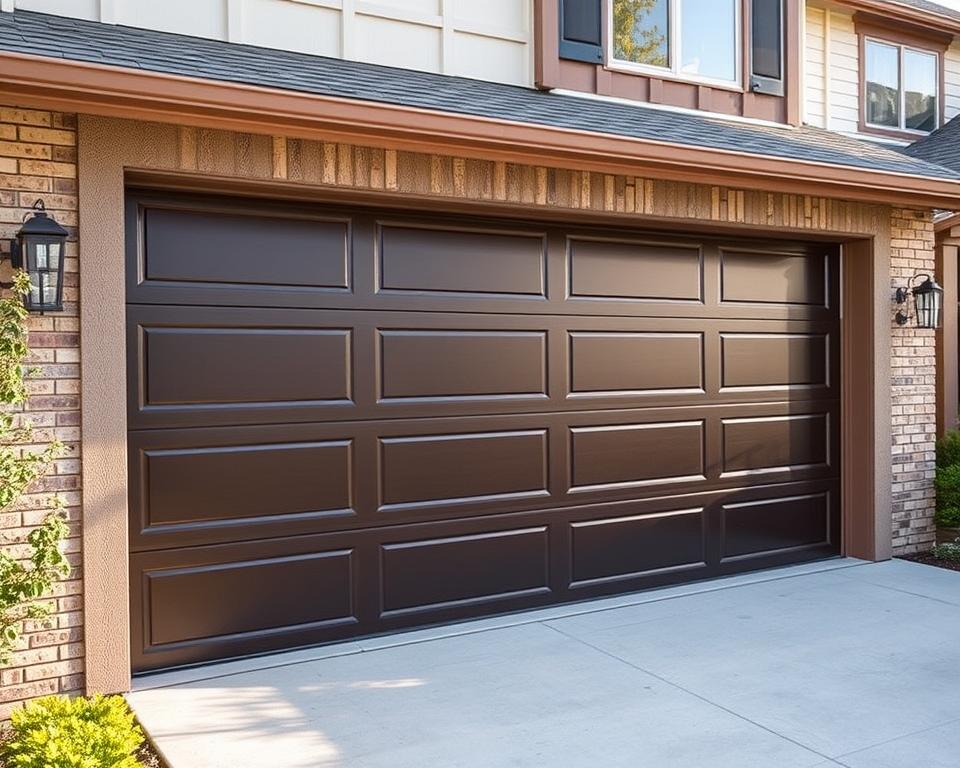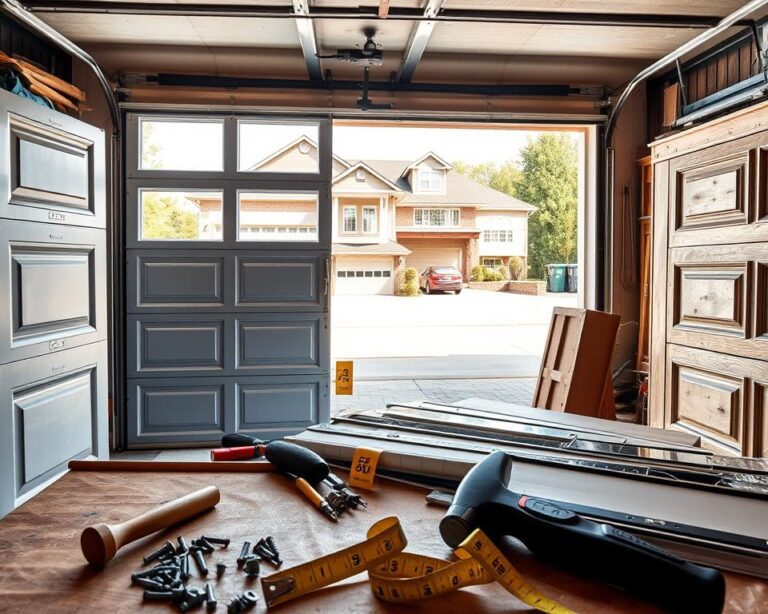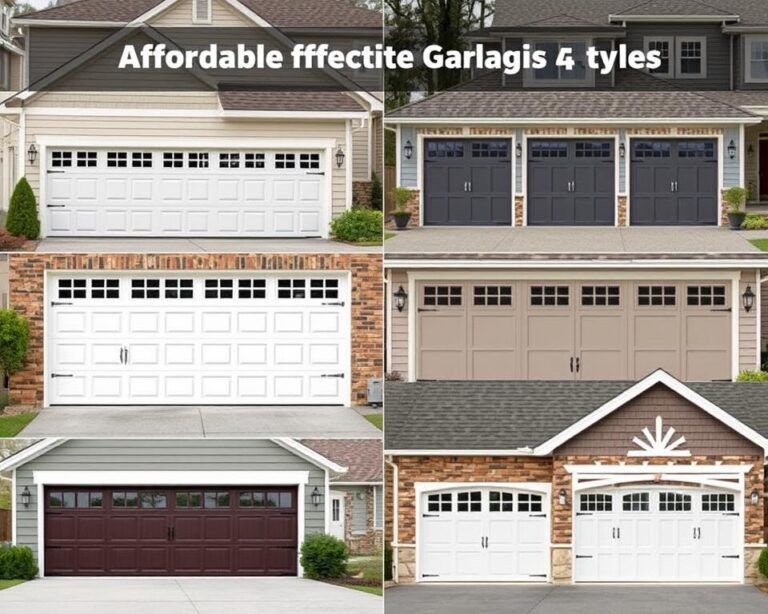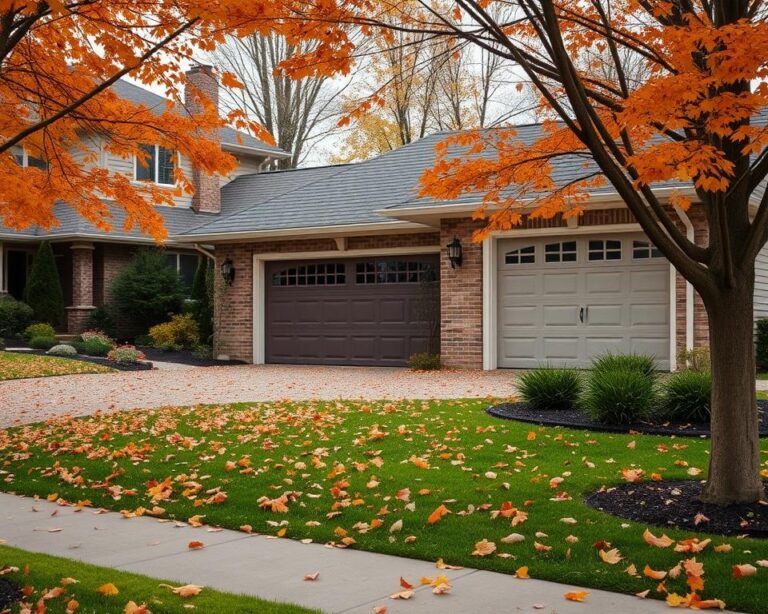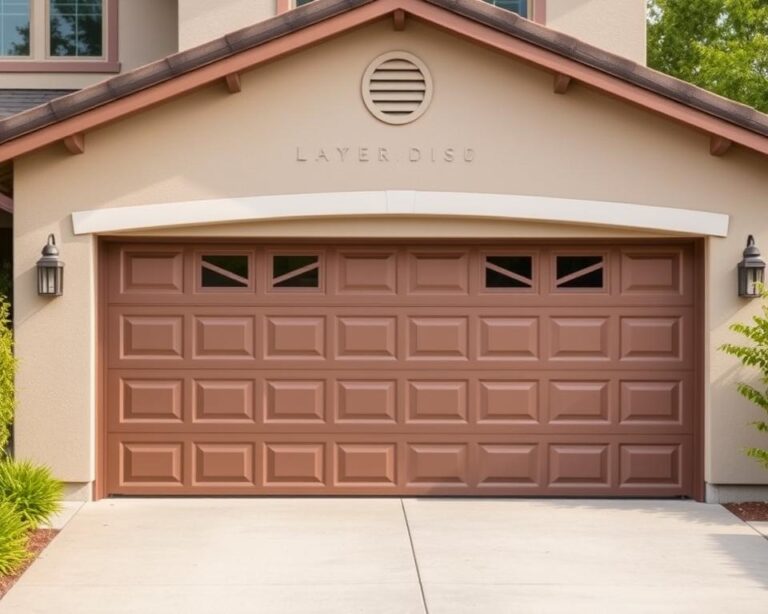Is a Higher R-Value Garage Door Worth It?
Garage doors are more than just a way into our homes. They affect how much energy we use. A high R-value garage door can save us money on energy bills over time. These doors keep our garages and homes cozy by blocking heat.
Looking for ways to cut down on energy costs, we find high R-value garage doors appealing. They are made to stop heat from passing through, making our homes more energy-efficient. For example, a 1-3/8″ thick Clopay-brand garage door has an R-value of 12.9. This is much better than a non-insulated steel door with an R-value of 0.
Thinking about getting a new garage door? High R-value doors offer many benefits. They make our homes more comfortable and last longer. With many styles to choose from, we can find the perfect door that fits our needs and budget.
Understanding R-Value in Garage Doors
When looking at insulated garage doors, the R-value is key. But what does R-value mean? It shows how well a material stops heat from passing through. A higher R-value means better insulation.
For energy efficiency, a low U-factor is also important. The U-factor shows how much heat a garage door lets through. A lower U-factor means less energy use for heating and cooling. This is good for the environment too.
- Insulation material type
- Number of layers
- Installation quality
Choosing the right insulated garage doors can improve your home’s warmth. It also cuts down on energy use and helps the planet.
The Real Benefits of High R-Value Garage Doors
We’ve talked about how important R-value is in garage doors. Now, let’s look at the benefits of high R-value garage doors. They offer better insulation, which means more comfort, savings, and durability. For example, a high R-value garage door can keep your garage up to 40 degrees Fahrenheit warmer than outside.
Some key benefits of high R-value garage doors include:
- They improve thermal performance, cutting down on energy use and costs for heating and cooling.
- They are more durable, less likely to bend and misalign.
- They block more sound, making your home quieter by reducing outside noise.
- They can save 20% to 30% on energy each year compared to non-insulated doors.
When picking a garage door, think about your climate, insulation type, and material. Polyurethane insulation, for example, can make your door twice as efficient as polystyrene. The right garage door can make your home more comfortable and save energy.
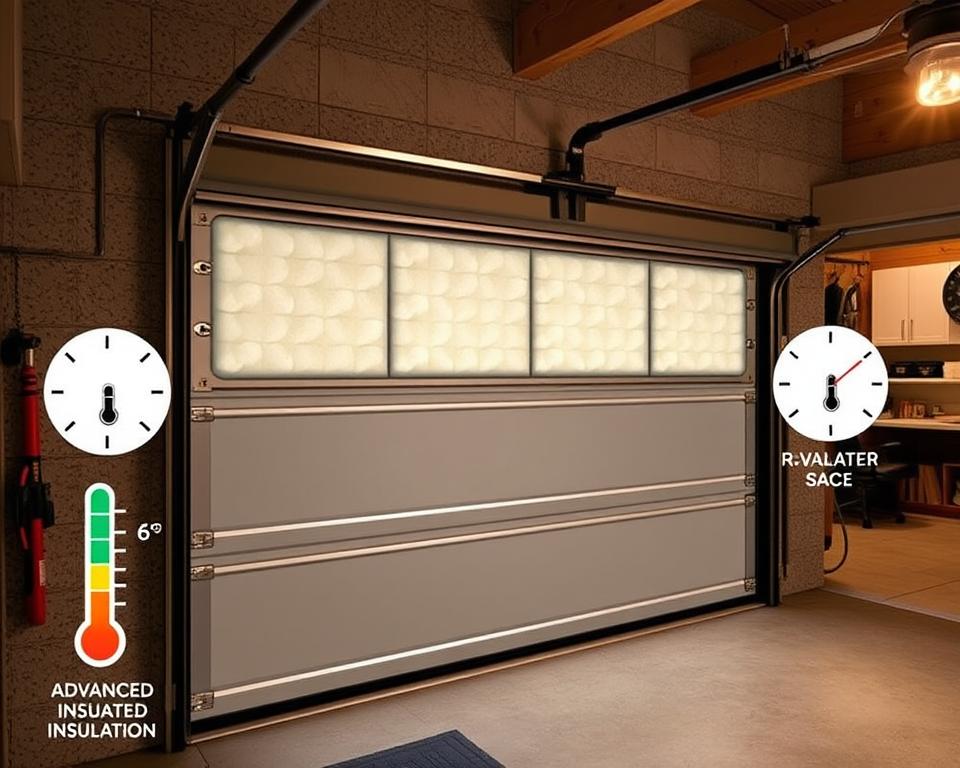
Choosing a high R-value garage door also means your door will last longer. Insulated doors can last 20-30 years, while non-insulated ones last 15. Plus, energy-efficient upgrades like these can increase your home’s value by about 70% in the first ten years.
Cost Analysis: Initial Investment vs Long-Term Savings
Thinking about R-value optimized garage doors? It’s key to look at the cost now versus what you’ll save later. These doors help cut down on energy use, which means lower bills for you.
Standard, non-insulated garage doors start at $800 and go up to $1,500. Insulated doors with a moderate R-value cost between $1,500 and $3,000. And high R-value doors can be $2,500 to $4,500 or more.
Average Installation Costs
The price to install R-value optimized garage doors changes based on size, material, and insulation. But, the energy savings of $200 to $500 a year can make it worth it.
Potential Energy Savings Over Time
Opting for R-value optimized garage doors can cut energy use by 10-20% each year. This means big savings on your bills, mainly when it’s really hot or cold outside.
Impact on Property Value
Not only do these doors save energy, but they also boost your home’s value. You might get back up to 70% of what you spent on energy-efficient doors when you sell. It’s a wise choice for the future.
Comparing Different Insulation Types and Materials
Choosing the right insulation for our garage doors is important. We have many options, each with its own benefits and drawbacks. Polystyrene foam has R-values of R-4 to R-8. On the other hand, Polyurethane offers R-values of R-10 to R-18, making it a top choice.
A typical garage insulation R-value is between R4 and R8. But, if your garage is heated or cooled, you’ll need an R-value higher than R9. Here are some insulation materials to consider:
- Fiberglass insulation, with an R-value ranging from R-6 to R-12
- Reflective foil insulation, providing R-values of R-3 to R-6
- Cellular PVC insulation, with R-values between R-5 to R-8
Insulated garage doors can cut energy costs by 15-20%, says the U.S. Department of Energy. By picking the right insulation, we can make our garage doors more energy-efficient. This saves money and helps the environment.
Climate Considerations for R-Value Selection
Choosing the right R-value for your garage door depends on your climate. Insulated garage doors keep your garage at a comfortable temperature. But, how much insulation you need changes with the weather.
In cold areas, you need a higher R-value to keep warmth in. In warmer places, a lower R-value might be enough. Think about these factors when picking an R-value for your garage door:
- Cold climate requirements: An R-value of 13 or higher is recommended for optimal insulation in colder climates.
- Warm climate considerations: A lower R-value may be sufficient in warmer climates, but it’s important to consider the level of insulation needed to regulate the temperature inside your garage.
- Humidity impact factors: High humidity can affect the performance of your garage door insulation, so it’s essential to choose a material that can withstand moisture.
Top-rated garage door insulation helps you get the right insulation for your climate. Look for insulated garage doors with R-values above 16 for the best energy efficiency. By picking the right R-value for your climate, your garage door will be both insulated and energy-efficient.
Investing in top-rated garage door insulation brings many benefits. You’ll use less energy and save on heating and cooling costs. Don’t forget to add weatherstripping and insulation around the garage door frame. This will help keep the heat in and make your garage more energy-efficient.
Maintenance Requirements for Insulated Garage Doors
To keep your best garage door thermal performance in top shape, regular maintenance is key. This means keeping the door clean, checking the insulation, and doing routine inspections. These steps help avoid damage and keep the superior garage door insulation working well, saving energy.
Some important maintenance tasks include:
- Regularly cleaning the door to prevent dirt and debris buildup
- Inspecting the insulation for signs of damage or wear
- Checking the door’s seals and weatherstripping to prevent air leaks
By sticking to these maintenance tips, we can make our insulated garage door last longer. It will keep providing superior garage door insulation and best garage door thermal performance. This not only cuts down on energy bills but also helps the environment.
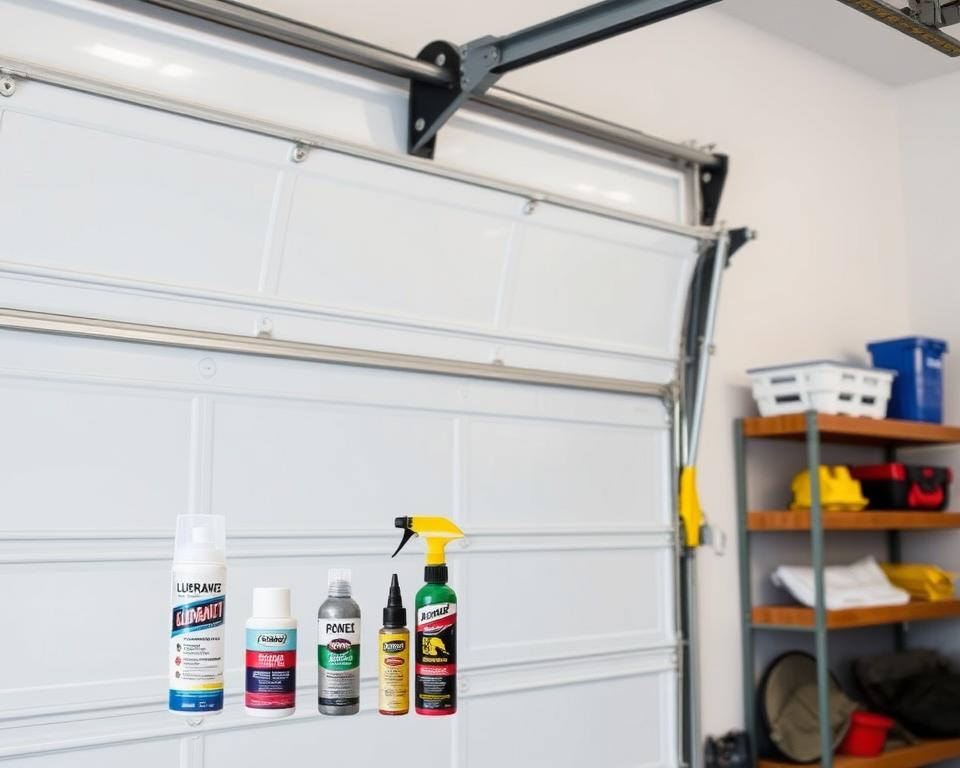
Making the Smart Investment: Why Higher R-Values Pay Off
Choosing a garage door with a higher R-value is a smart move. It boosts energy efficiency and cuts down on utility bills. Plus, it makes your home more comfortable and valuable.
Garage doors with R-values between 10 and 20 or more are best for keeping your space warm or cool. They help keep the temperature steady, saving you money on heating and cooling. This can save you hundreds of dollars every year.
Higher R-value garage doors also make your home more comfortable. They keep extreme temperatures out and prevent air leaks. This smart choice can even increase your home’s value, making it a worthwhile investment for the long run.

